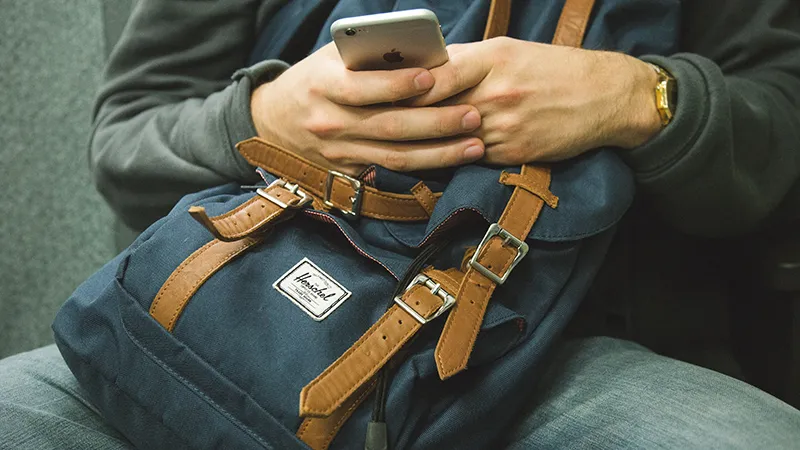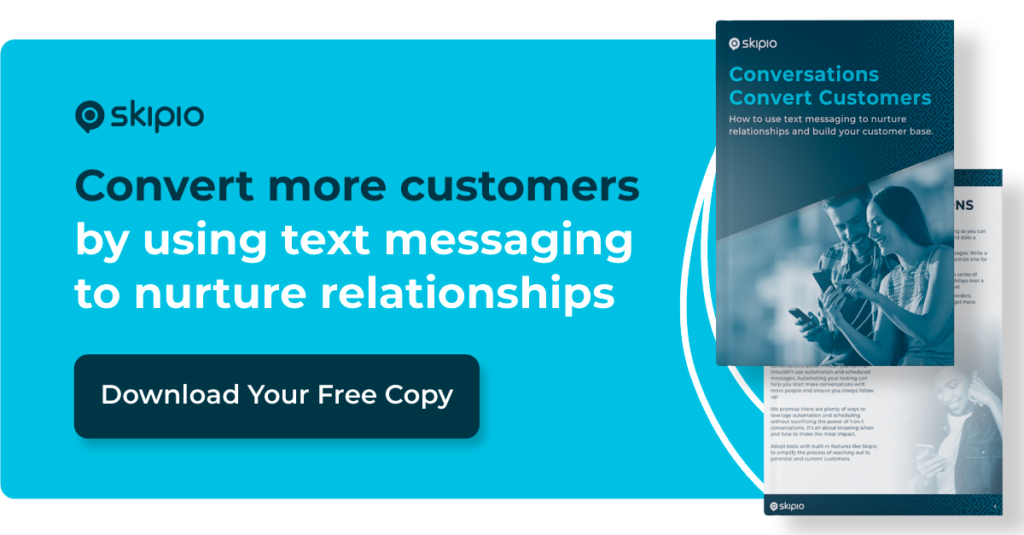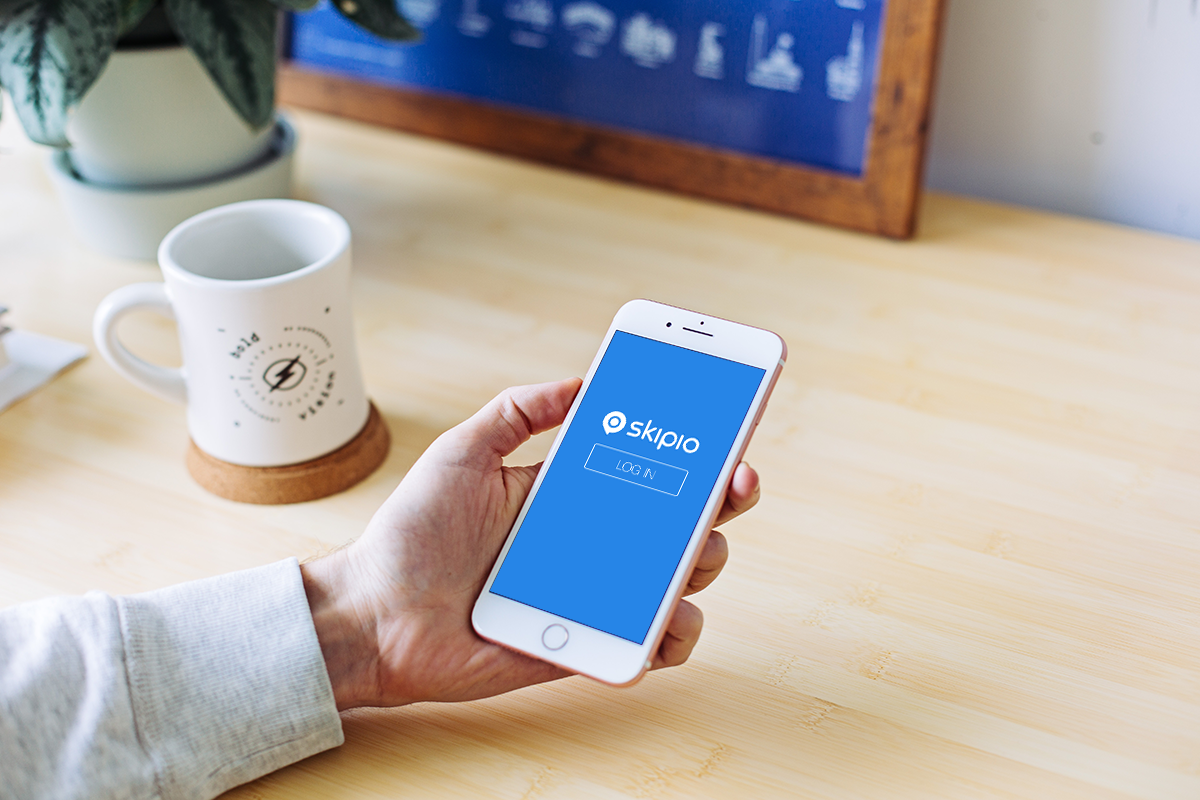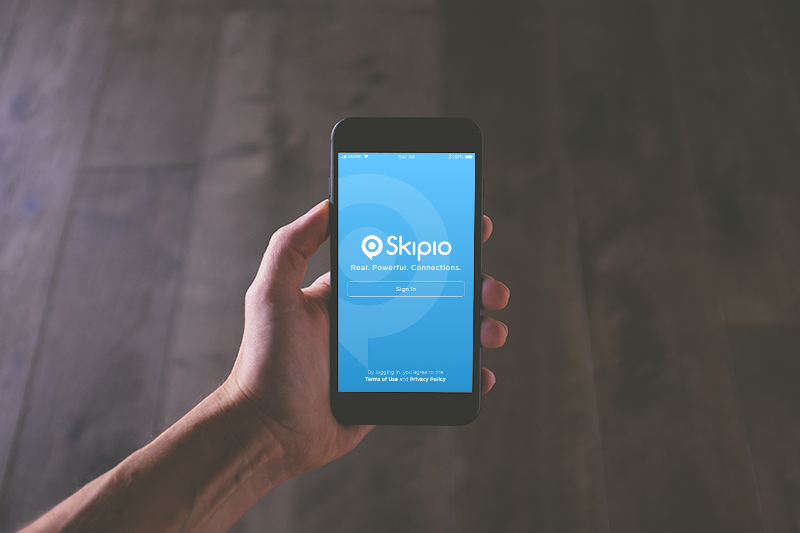
The future of business communication, specifically business-to-customer communication, is texting. It’s on the rise with businesses worldwide. And for good reason!
Why, you ask? Well, it’s what consumers want! Did you know that 78% of your customers would rather communicate with your business via text of any other method? Or what about the fact that the average text message is read in the first 5 seconds of being delivered? This is important because around half of all sales go to the vendor that responds to an inquiry first. If texting your new leads isn’t a competitive advantage, I don’t know what is.
As if that’s not enough to convince you to pay attention to business texting, here are more than 150 reasons why:
Text Message Time and Rate Stats
- Text messages have a 98% open rate.
- A text message gets a response in the first 90 seconds on average. Emails’ response time is 90 minutes (average).
- The average college student spends about 94 minutes per day texting.
- On average only takes 5 seconds to read a SMS from start to finish.
- Phone calls are 10 times slower than texting on average.
- 23 hours per week is spent by an average adult on texting.
- 96% of the people who own a smartphone text.
- 33% of Millennials’ mobile phone usage is taken by messaging.
- The average adult spends 23 hours a week texting.
Texting Conversion Rates
- A report on SMS marketing by pure 360 says that “32 percent of recipients respond to SMS offers, with texted coupons redeemed 10 times more often than traditional coupons.”
- 54 percent of consumers receive at least one SMS message per day, and 50% of US consumers who receive branded SMS texts go on to make direct purchases.
- 29% percent of people who receive SMS marketing click on links in messages they receive, and 47 percent of those go on to make a purchase. That’s almost a 14% conversion rate!
- Online cosmetics company Julep reported a 10.7% redemption rate for an offer they sent via text message.
- smart Insight also says that SMS-based surveys have high conversion rates, with 31% of consumers responding on average within five minutes.
- Texting a prospect AFTER initial contact increased conversion rates by 112.6%
- The more the better! Sending one text increased conversion rates by 89%, two by 74%, and three by 328%! However, each message needs to contain value in it for the consumer.
- Speed to lead: Texts are read in 5 seconds of being sent, on average have a 90 second response time. Between ⅓ and ½ of all sales go to the vendor that responds first.
- Texting has a 32% conversion rate on average.
- Only 25% of your leads are ready to make a buying decision, so you need to optimize your lead nurturing with texting.
Text Message ROI and Retention
- The British motor racing circuit Silverstone sent a text message to 45,000 people in their database inviting them to purchase tickets for an upcoming Formula 1 race. That single message delivered to Silverstone an ROI of 680%!
- Julep reported a 99% retention rate for its text message subscribers!
- Consumers are willing to pay 17% more for products and services supported by text messaging.
Business Texting Statistics
- Nearly 78% of consumers would like to communicate with a business via text.
- 79% of bosses use texting in business and say they are supportive of texting in business.
- Businesses would like to receive messages from business numbers in 61% of cases.
- 80% of professionals currently use SMS for business purposes.
- More than 50% of professionals say they can’t stand 10 minutes without responding to a text.
- About 44% of all consumers would rather start texting a business than wait for an agent’s response on the line.
- Within the sales process, texting with a qualified sales rep can increase conversions up to 100%.
- 72% of business experts are more likely to prefer texting over instant messaging apps.
- 66% of all consumers surveyed rank messaging overall as their preferred channel for contacting a company.
- 70% of respondents said they would prefer to use mobile messaging to help troubleshoot an issue.
- 64% of consumers would use business texting to make a purchase or booking.
- Cable/internet/wireless providers, retailers, video streaming services, travel services, and financial services are the top industries consumers say they would want to text.
- 71% of consumers say that text messaging is very or extremely effective for engaging with a brand.
- Convenience, quick response times, and ease of texting are the top three reasons consumers want to use messaging.
- 82% of consumers surveyed say that a poor customer service experience would significantly impact their future decision to continue to do business with a company.
- 6 out of 10 consumers say they never buy again from a company that delivered poor customer service.
- 90% of leads prefer to be texted, as compared to called.
- In business texting, the text message response rates are 295% higher than the rates from phone calls.
- 79% of businesses think their customers want SMS/text support.
- According to Dimension Data, 38% of call centers currently offer SMS, and 23% have plans to add it in the next 12 months.
- 80% of people currently use texting for business.
- 1 in 5 consumers are just as likely to prefer a business to customer SMS than a phone call.
- The consumer activities people with text would most prefer to do via text are: check on an order status (38%) schedule or change appointments (32%), and make or confirm reservations (31%).
- Over half of customers said they would be likely to text with a customer support agent. Similarly, 52% would prefer texting customer support over their current preferred form of communication.
- A 2012 study by CFI group found that text was the highest rated contact method for customer satisfaction out of all other possible customer communication channels. Text messaging earned 90 out of 100 points, phone scored 77 out of 100, and Facebook 66.
- Millennials prefer automated text messaging over other speech-based options.
- SMS text chat converts a $6–$20 business-to-customer phone call to a chat, which costs pennies per conversation.
- At least five types of social media channels are used in more than 50% of call centers. This includes business to customer texting.
- Sales prospects who are sent text messages convert 40% higher than those who aren’t sent text messages.
- Only approximately 25% of marketers currently use text messaging. Over 65% of them report texting for marketing as being “very effective.”
- 70% of consumers in the United States say they appreciate getting texts or emails from healthcare providers.
- 75% of people would like to have offers sent to them via SMS.
- Over 80% of people prefer to be sent a maximum of two text marketing messages per month.
- 44% of people who actively text would prefer to press a button to initiate a text conversation instantly rather than just waiting on hold to speak with an agent.
- Texting in the sales process can increase conversions more than 100%. But sending text messages before establishing prior contact with a potential customer can decrease both contact and conversion rates.
- 20% of financial services companies use mobile messaging to ensure business continuity and add to their multichannel capabilities.
- 77% of consumers with texting capabilities aged 18–34 are likely to have a positive perception of a company that offers text capability.
- 44% of consumers would rather receive product details and other marketing messages via business to customer texting than any other channel.
- Nearly 70% of employees say their organization should use texting to communicate with employees, and 86% say it should not be reserved for just customer communication.
- 64% of all consumers are likely to have a positive perception of a company or business that offers texting as a customer communication channel.
- 89% of consumers want to use messaging to communicate with businesses.
- Messaging is the #1 preferred customer service channel for consumers in the U.S.
- 61% of businesses would prefer to send and receive texts from their current business number.
- 61% of US call centers have – or plan to offer – SMS customer support by the end of the year.
- More than 50% of customers would rather text a customer support agent rather than using other options.
- 90% of leads would rather be texted than called on the phone!
- Texting has a 209% higher response rate phone calls.
- Positive or “yes” responses are 295% with text messaging than phone calls.
- Verifications through texting are 200% higher than an email verification.
- People prefer text most for scheduling or changing appointments, and making or confirming reservations. (Other uses include sending account balances, special offers, and surveys).
- Despite the demand for texting, only 30% of survey participants report receiving texts from companies they do business with.
- 80% of B2B buyers expect real-time interaction.
Retention Statistics
- 82% of consumers proactively seek referrals from peers before making a purchasing decision.
- Repeat customers have a 54% chance of making another purchase.
- A repeat customer has a 60–70% chance of converting.
- A repeat customer is nine times more likely to convert than a first-time shopper.
- Research found that your loyal top 10% spend three times more per order than the lower 90%, and your top 1% of customers spend five times more than the lower 99%
- Bain found that apparel shoppers purchase 67% more per order after shopping with a company for 30 months than they spent on their initial purchase.
- According to Adobe, the average shopper spends 17% more per transaction during the holiday rush. While this is great news, your repeat customers spend even more. Your store’s repeat customers actually spend 25% more per transaction during the busy season.

Customer Service Statistics
- Over half of respondents (52%) said they would be likely to text with a customer support agent. Similarly, 52% would prefer texting customer support more than their current preferred method of communication.
- Around a third of respondents said it was important for texting to be an available support option, and 47% said that texting could improve their overall satisfaction with customer support.
- The report also found 79% are frustrated with their available customer support options; 51% said they had only a “low” to “fair” satisfaction with existing means of customer support communication, and 89% said they wanted choices for how they could contact customer support.
- The vast majority (89%) of respondents said that it is important to have different options such as phone, email, text, and chat for customer support.
- Being on hold appears to be a major source of frustration for consumers, with 38% of respondents spending 10 to 30 minutes on the phone with a customer support representative, while 56% said that they’ve waited an hour or more to have their problems solved.
- Sixty-six percent of consumers say they are likely to switch brands if they are treated like a number instead of an individual.
Texting Volume Stats
- It is estimated that 33 percent more people have access to mobile phones than to toilets around the world. In 2013, six billion people had access to a mobile phone and SMS (texting).
- On average, 20 billion text messages are being sent PER DAY this year, translating to 7.3 trillion texts sent annually! That’s more than 5.5 million messages every second!
- Email open rates are great at 20–30 percent. But according to a Dynmark report, SMS blows that away at 98% open rate! In fact, 90% are read within 3 seconds.
- More than a 7,700% monthly increase in texts sent over the last decade was spotted worldwide.
- More than 560 billion SMS are sent monthly all over the world.
- Instant messengers like Facebook Messenger, Viber, or WhatsApp, combined with SMS every day transmit more than 60 billion messages.
- About 4.2 billion ordinary people print texts and send messages worldwide.
- SMS is the most widely used service all around the world..
- Texting is the most widely-used and frequently used app on a smartphone, with 97% of Americans using it at least once a day.
- Over six billion text messages are sent in the U.S. each day.
- Over 80% of American adults text, making it the most common cell phone activity.
- Text messaging has a 45% response rate, while email only has a 6% response rate.
- Texting takes up 14.1% of cell phone users’ time.
- 90% of all text messages are read in under 3 minutes.
- Text messages are read on average in under five seconds.
- 75% of phones worldwide (4.5 billion) are text-enabled.
- 96% of smartphone users text.
- Americans sent 69,000 texts every second in 2012.
- The average adult spends a total of 23 hours a week texting.
- The average Millennial exchanges an average of 67 text messages per day.
- On average, Americans exchange twice as many texts as they do calls.
- Only 43% of smartphone owners use their phone to make calls, but over 70% of smartphone users text.
- 55% of heavy text message users (50+ texts per day) say they would prefer to receive a text over a phone call.
- In 2011, 31% of Americans said they preferred text messages to phone calls.
- It takes the average person 90 minutes to respond to email but only 90 seconds to respond to a text message.
- American women text 14% more than men.
Demographic Stats
- On average, 133 messages per week are sent by a young person aged 18 to 25 years.
- 91% of teenagers who have cell phones actively use them to write SMS.
- About 50% of adults, aged 18–24, confirm that text dialogues are not less (if not more) meaningful to them as phone calls.
- On average, adults under 45 are more likely to receive and send more than 85+ messages every day.
- 59% of students confirm that a college can message them first.
- 77% of students demand from colleges needful information via text message.
- Everyday people, aged 18–24, send and receive about 128 texts.
- People between the ages of 18 and 24 send and receive 3,853 texts monthly.
- People between the ages of 25 and 34 send and receive more than 75 messages per day.
- Adults who are under the age of 55 send and receive only 16 texts per day.
Regional USA Stats
- About 81% of Americans use SMS to communicate every day.
- 2.27 trillion messages are usually sent annually in the USA. Pretty much, eh?
- The USA is responsible for about 45% of the whole world’s message volume.
- On average, Americans write messages twice more often than they call.
- In 2010, almost 200,00 messages were sent each second during the year, and all by the Americans.
- Most people will spend an average of 11 years on their mobile phones. (Adam Alter, Irresistible)
- The average adult picks up their phone three times an hour. (Adam Alter, Irresistible)
Are you ready to join the future of business communication and improve your business process? Take a tour of Skipio.



